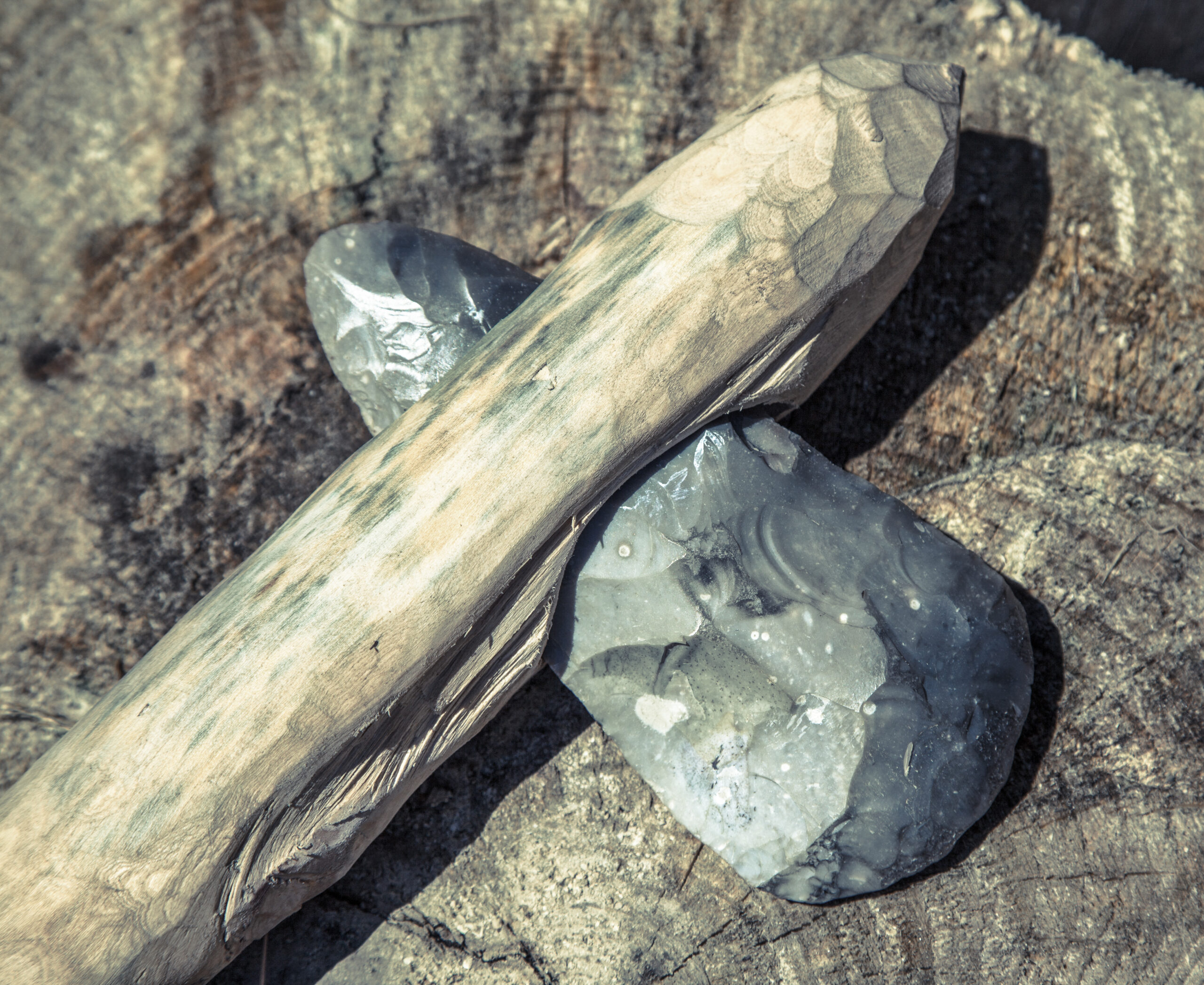As the Mesolithic Period (‘middle stone age’) turned into the Neolithic Period (‘new stone age’) around 4,000BC in Britain, axes became more and more important. A good stone axe was essential to be able to clear the forest and create fields to grow crops and keep animals. And the best axes, over a period of around 1200 years, seem to have come from Great Langdale in the English Lake District.

There were perhaps 200,000 people in the whole of Britain at the time, living in scattered communities wherever conditions were favourable. Archaeologists argue whether the earliest farmers kept animals or grew crops, but a settled existence made clearing the land essential and an axe would be needed to do this.
Suitable rock types for axe making could be found in many places across the country, but the Langdale Valley was a great source of greenstone, which was perfect for making axes. The greenstone appears to have initially been found on the scree slopes near the summits, but was also shallow mined in places. There is still plenty of evidence of rough cut stones and debris, as well as hammerstones, in the area today. Rough cut stones were transported from the summits to lowland areas, often on the coast, where they were finished by polishing and final shaping. Langdale Axes were a very attractive shade of green, but were also very strong and practical. They would have been fixed into a wooden haft (or handle) for use. They are often around 11 inches long and 3 or 4 inches wide. A great deal of effort was needed, often taking several weeks, to produce the finished axe.

What is particularly interesting is the fact that about a quarter of all stone axes studied by experts come from the Langdale Valley. Axes have been found in archaeological digs from North-East Scotland all the way to Cornwall. There seem to be more in the East of the country than in the West. Why is this? And how did they get from Langdale to their destination? Some of the axes are worn, showing they have had a lot of use. Some are brand new, well-polished, obviously highly-valued, yet seem to have been deposited in water, perhaps as an offering to the Gods.
What does that tell us about Neolithic times? Communities may have been small and scattered but they did from time to time come together to build henges, like Stonehenge. There was obviously a complex trading network throughout the country. Communities did stay in touch. Whether the axes were bought and sold, or were ‘gifted’ in return for favours of one sort or another, we do not know. What is certain is that axes from Great Langdale were very highly valued throughout much of the country and people must have gone to great trouble to obtain both the raw materials – from high up in the Lake District Fells – and the finished article. Perhaps Neolithic people were not so simple as we sometimes make out.




